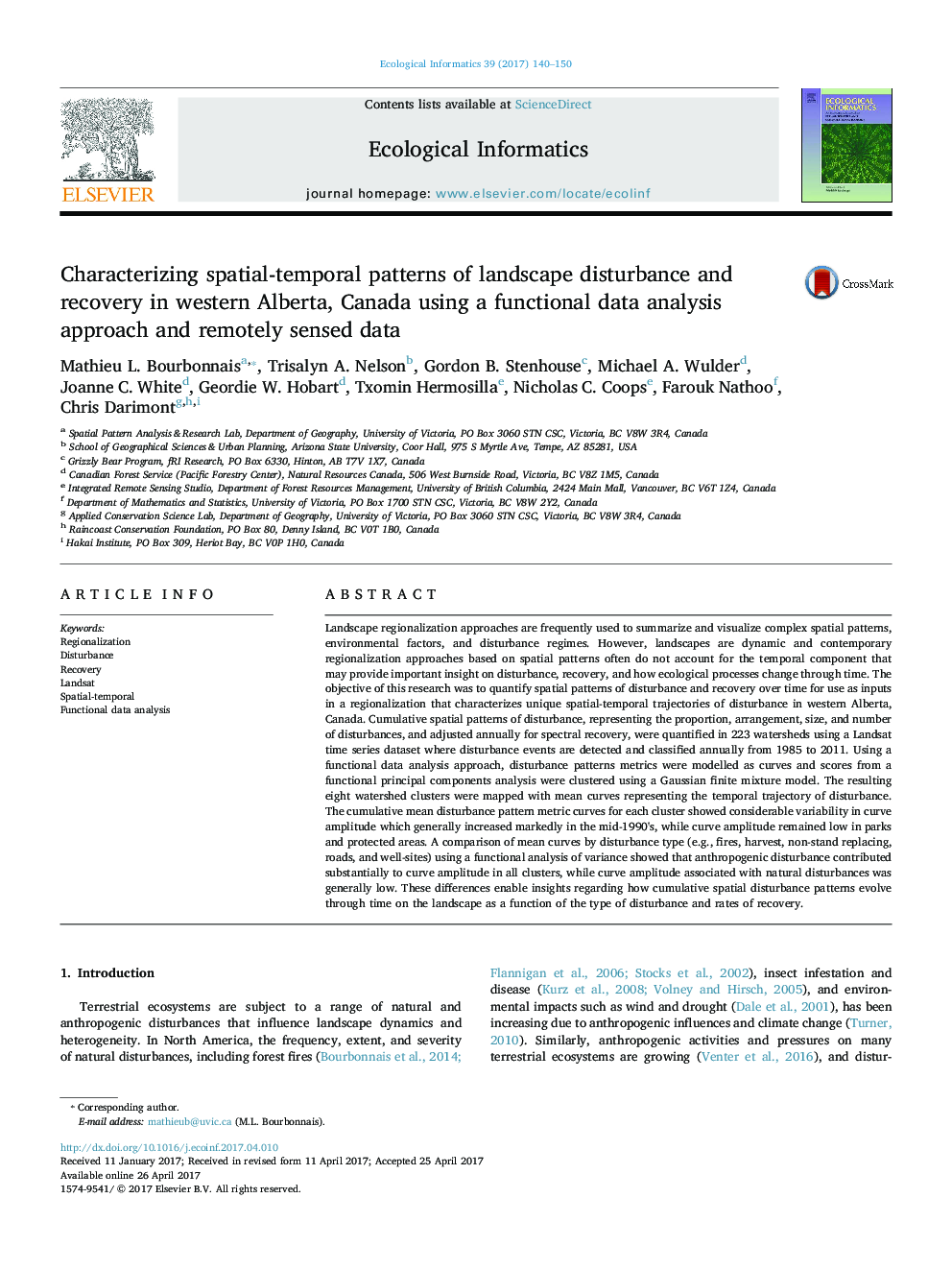| کد مقاله | کد نشریه | سال انتشار | مقاله انگلیسی | نسخه تمام متن |
|---|---|---|---|---|
| 5741950 | 1617195 | 2017 | 11 صفحه PDF | دانلود رایگان |
- Landscape disturbance and recovery influences ecological processes over time.
- Landsat time series used to quantify spatial patterns of disturbance and recovery
- A functional data analysis regionalization of disturbance trajectories is developed.
- Cumulative disturbance curves demonstrated considerable regional variability.
- Anthropogenic disturbance contributed to disturbance curve amplitude in all regions.
Landscape regionalization approaches are frequently used to summarize and visualize complex spatial patterns, environmental factors, and disturbance regimes. However, landscapes are dynamic and contemporary regionalization approaches based on spatial patterns often do not account for the temporal component that may provide important insight on disturbance, recovery, and how ecological processes change through time. The objective of this research was to quantify spatial patterns of disturbance and recovery over time for use as inputs in a regionalization that characterizes unique spatial-temporal trajectories of disturbance in western Alberta, Canada. Cumulative spatial patterns of disturbance, representing the proportion, arrangement, size, and number of disturbances, and adjusted annually for spectral recovery, were quantified in 223 watersheds using a Landsat time series dataset where disturbance events are detected and classified annually from 1985 to 2011. Using a functional data analysis approach, disturbance patterns metrics were modelled as curves and scores from a functional principal components analysis were clustered using a Gaussian finite mixture model. The resulting eight watershed clusters were mapped with mean curves representing the temporal trajectory of disturbance. The cumulative mean disturbance pattern metric curves for each cluster showed considerable variability in curve amplitude which generally increased markedly in the mid-1990's, while curve amplitude remained low in parks and protected areas. A comparison of mean curves by disturbance type (e.g., fires, harvest, non-stand replacing, roads, and well-sites) using a functional analysis of variance showed that anthropogenic disturbance contributed substantially to curve amplitude in all clusters, while curve amplitude associated with natural disturbances was generally low. These differences enable insights regarding how cumulative spatial disturbance patterns evolve through time on the landscape as a function of the type of disturbance and rates of recovery.
Journal: Ecological Informatics - Volume 39, May 2017, Pages 140-150
